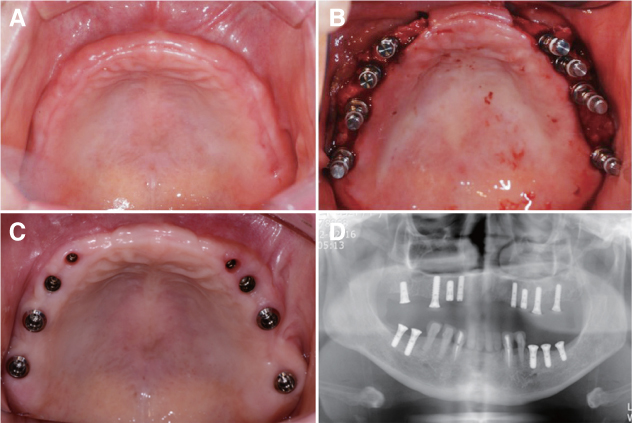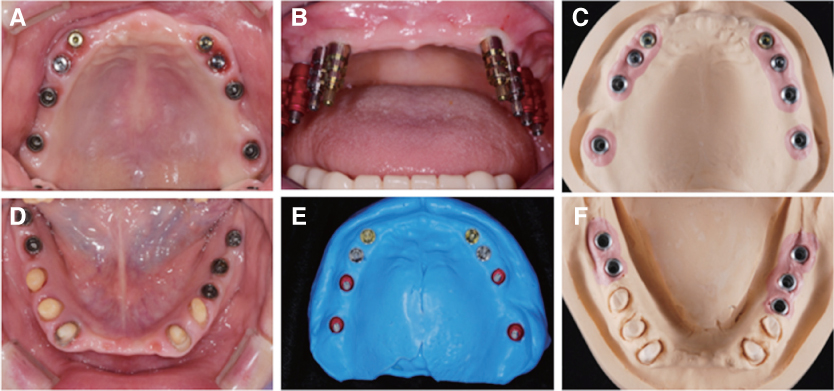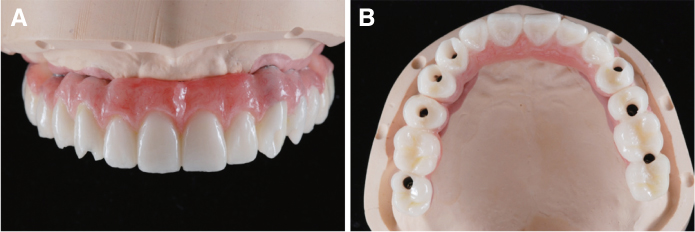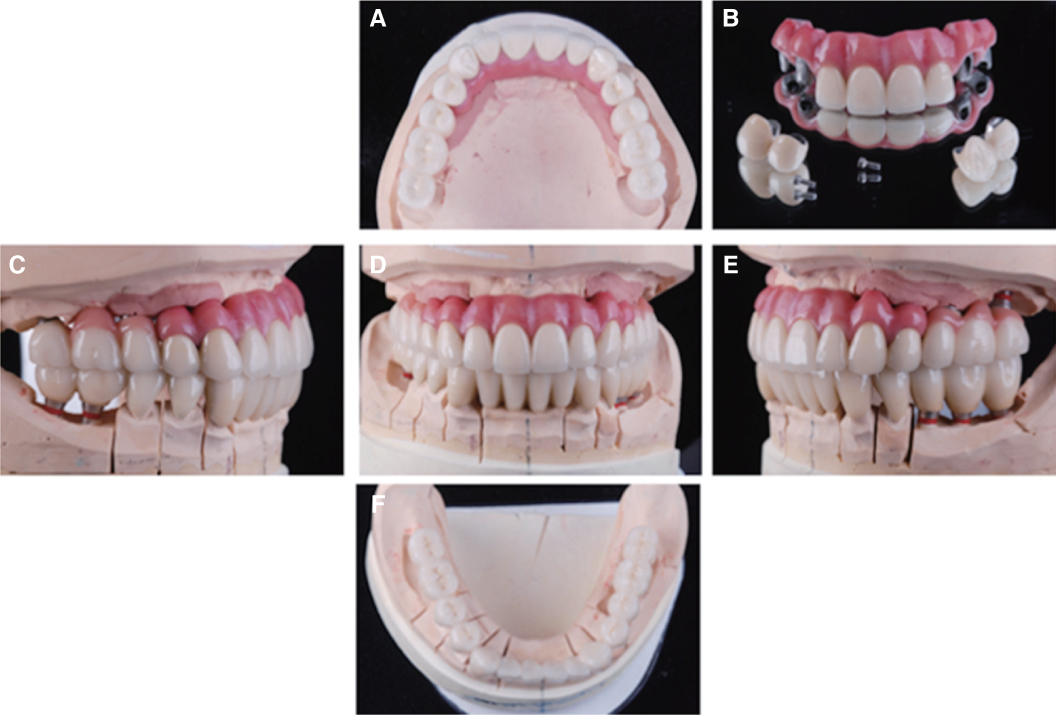J Korean Acad Prosthodont.
2019 Jul;57(3):288-295. 10.4047/jkap.2019.57.3.288.
Full mouth rehabilitation of patient with severe dental caries with implant fixed prosthesis fabricated with milling and 3D printing method: A case report
- Affiliations
-
- 1Department of Prosthodontics, School of Dentistry, Kyung Hee University, Seoul, Republic of Korea. krkwon@khu.ac.kr
- KMID: 2453784
- DOI: http://doi.org/10.4047/jkap.2019.57.3.288
Abstract
- Passive fit of prosthesis is an essential property of implant supported prosthesis for long term success and minimization of complications. And the property is determined mostly by fabrication procedure. There were limitations of extensive implant prosthesis because conventional casting method generate contraction error of long span prosthesis. However, Computer-aided design/Computer-aided manufacturing (CAD/CAM) technology of 3D printing and milling metal framework can overcome those limitations. This case is a full mouth rehabilitation using extensive implant fixed prosthesis. Removable interim prosthesis was made for esthetic, functional evaluation and a guide for implant insertion. After the insertion, implant fixed interim prosthesis was delivered. After additional evaluation and adjustment, final prosthesis was designed with CAD, the fabricated with CAM. Milling technique was used for anterior screw type implant superstructure and 3D printing technique was used for the anterior and posterior implant copings. Fit of the final restoration was favorable. The practitioner and patient were both esthetically and functionally satisfied with the final result.
MeSH Terms
Figure
Reference
-
1. Strub JR, Rekow ED, Witkowski S. Computer-aided design and fabrication of dental restorations: current systems and future possibilities. J Am Dent Assoc. 2006; 137:1289–1296.2. Jemt T, Lekholm U. Measurements of bone and frame-work deformations induced by misfit of implant superstructures. A pilot study in rabbits. Clin Oral Implants Res. 1998; 9:272–280.
Article3. Carr AB, Stewart RB. Full-arch implant framework casting accuracy: preliminary in vitro observation for in vivo testing. J Prosthodont. 1993; 2:2–8.
Article4. Turner KA, Missirlian DM. Restoration of the extremely worn dentition. J Prosthet Dent. 1984; 52:467–474.
Article5. Willis FM. Features of the face involved in full denture prosthesis. Dent Cosmos. 1935; 77:851–854.6. Kwon KR, Woo YH, Choi DG. The study of relationship between sagittal condylar guide angle and incisal guide angle during mandibular prostrusion in normal Korean. J Korean Acad Prosthodont. 1989; 27:11–36.7. Schuyler CH. The function and importance of incisal guidance in oral rehabilitation. 1963. J Prosthet Dent. 2001; 86:219–232.8. Riedy SJ, Lang BR, Lang BE. Fit of implant frameworks fabricated by different techniques. J Prosthet Dent. 1997; 78:596–604.
Article9. Phillips KM, Nicholls JI, Ma T, Rubenstein J. The accuracy of three implant impression techniques: A three-dimensional analysis. Int J Oral Maxillofac Implants. 1994; 9:533–540.10. Sertgöz A. Finite element analysis study of the effect of superstructure material on stress distribution in an implantsupported fixed prosthesis. Int J Prosthodont. 1997; 10:19–27.11. Ortorp A, Jemt T, Bäck T, Jälevik T. Comparisons of precision of fit between cast and CNC-milled titanium implant frameworks for the edentulous mandible. Int J Prosthodont. 2003; 16:194–200.12. Takahashi T, Gunne J. Fit of implant frameworks: an in vitro comparison between two fabrication techniques. J Prosthet Dent. 2003; 89:256–260.
Article
- Full Text Links
- Actions
-
Cited
- CITED
-
- Close
- Share
- Similar articles
-
- Full mouth rehabilitation of a patient with severe periodontitis using immediate loading after computer aided flapless implant surgery
- Full mouth rehabilitation of edentulous patient with fixed implant prosthesis
- Evaluation of internal fit of interim crown fabricated with CAD/CAM milling and 3D printing system
- Accuracy evaluation of dental models manufactured by CAD/CAM milling method and 3D printing method
- Implant Surgery for Fixed Implant-supported Prostheses in the Edentulous Mandible: A Case Report










